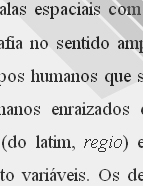

................................
Clearly dominated by didactic concerns, it provides precise instructions on how the papers should be prepared in order to have academic value, emphasising “the method and clarity of the presentation; the probity of the statements; the scrupulousness in the documentation” (italics by the author; p. 3). The detailed plan he proposes is divided into several questions, which, through careful consultation of documentation and archives, would allow a general history of the municipality and an overview of its administrative life to be drawn up. At the end, he includes a bibliography with references to studies and collections of documents printed by the municipal councils. The bibliographies and the methodological proposals for the study of the place show that there was a perceived need to increase the quantity and quality of this type of research. In some ways, this path has been followed, albeit hesitantly and with considerable delay compared to other European countries. Several factors can explain this fact, starting with the weak development of the higher education system in Portugal and the political and ideological context of the dictatorship and the Estado Novo. Thus, in general, it can be said that there was greater continuity with the type of studies carried out in the 19 th century than innovation during the first half of the 20 th century.
Historical and geographical publications continued to attract the interest of scholars and more useful information was gathered. At the beginning of the century, the Novo Diccionario Corographico de Portugal Continental e Insular (1902) by Francisco Cardoso de Azevedo, later improved and reissued, was noteworthy. Of greater scope was the publication by Esteves Pereira and Guilherme Rodrigues, Portugal: diccionario historico, chorographico, heraldico, biographico, bibliographico, numismatico e artistico (1904-1915, 7 vols.), with a wealth of useful information for local history. A few years later, Américo Costa’s Diccionario chorographico de Portugal Continental e Insular (1929-1949, 10 vols.) was published. In the field of scholarly memoirs, with abundant use of archives and documentary sources, the work of Francisco Manuel Alves, better known as Abade de Baçal, stands out: Memórias arqueológico-históricas do distrito de Bragança (11 vols., 1909-1932). The slow organisation of archives and the improvement of research methods under the auspices of the aforementioned “methodical” or “positive” school, which dominated Portuguese universities for several decades, enabled a certain development of more erudite studies. However, there was still a lack of systematic publication of primary sources for all regions of the country and municipalities. In this regard, the Gabinete de História da Cidade do Porto [Porto City History Office], created in 1936, stood out with its regular publication of Documentos e memórias para a história do Porto [Documents and Memoirs for the History of Porto], and the Gabinete de Estudos Olissiponenses [Lisbon Studies Office], founded in 1954, which would play a similar role in Lisbon. Among the researchers who published primary sources for local history, we can mention, for example: Artur de Magalhães Basto, in the case of Porto; Maria Teresa Campos Rodrigues, for Lisbon; António Baião, in relation to sources for the history of the Algarve; António Gomes da Rocha Madaíl, with regard to 18th-century parish information on Coimbra and documentation on the city and municipality of Aveiro; Manuel Monteiro Velho Arruda on documents relating to the discovery of the Azores. In fact, this work is indispensable for writing history, although the work of the historian does not end there, as V. Magalhães Godinho pointed out ( Essays II. On the History of Portugal , 1978, p. 92).
This work is financed by national funds through FCT - Foundation for Science and Technology, I.P, in the scope of the projects UIDB/04311/2020 and UIDP/04311/2020.
